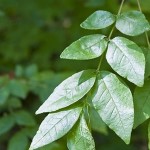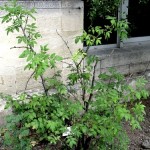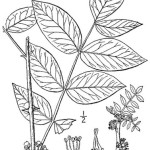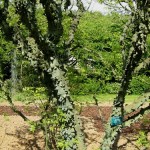Prickly Ash Bark (Northern) – Zanthoxylum americanum
|
Current Demand = Normal |
Parts Used: Bark |
 |
 |
 |
 |
Family: Rutaceae
Common Names: Northern Prickley Ash, Angelica Tree, Pellitory Bark, Suterberry, Yellowood, Hellip;
Description:
This shrubby, deciduous tree bears tiny, fragrant, yellow-green flowers in spring before the citrus-scented compound leaves appear. In autumn, there are dark berries covered with lemon-scented, glandular dots. It grows from 5-25 feet with alternating branches that are covered with sharp, strong scattered prickles.
The leaves also alternate and pinnate, consisting of 4-5 pairs of leaflets and one odd terminal leaf. The common footstalk is sometimes prickly on the back. The flowers are small and yellowish green and appears in April or May before the foliage. The branches have brown, cone-shaped prickles, and the bark, leaves and pods are highly aromatic.
Planting/Cultivation:
The Prickly Ash is native to Canada and northern, central US, preferring moist, shady sites such as woodlands. It is a relative fast growing plant in the wild. The deadwood needs cutting back in the winter or early spring.
The prickly ash is propagated by either seeds or root cuttings.
Seeds: best sown in a greenhouse as soon as it is ripe in the autumn. Sow in a cold frame. Germination should take place within 12 months. Prick our seedlings and put into individual pots and keep in a greenhouse over the first winter. The plant can then be transplanted to it’s permanent home in spring.
Root: root cuttings of at least 3cm, taken in late winter and placed horizontal in individual pots. Keep in a greenhouse over the winter and transplant to permanent home in the spring.
Harvesting/Drying:
Parts used: bark
Bark is stripped in spring and dried for use. The Fruits are collected in the summer and dried for later use.
Attributes (Images)
By Symac (Own work) [CC BY-SA 3.0 or GFDL], via Wikimedia Commons
By uwdigitalcollections [CC BY 2.0], via Wikimedia Commons
By Meneerke bloem (Own work) [GFDL or CC BY-SA 3.0], via Wikimedia Commons
 Root Buyer
Root Buyer